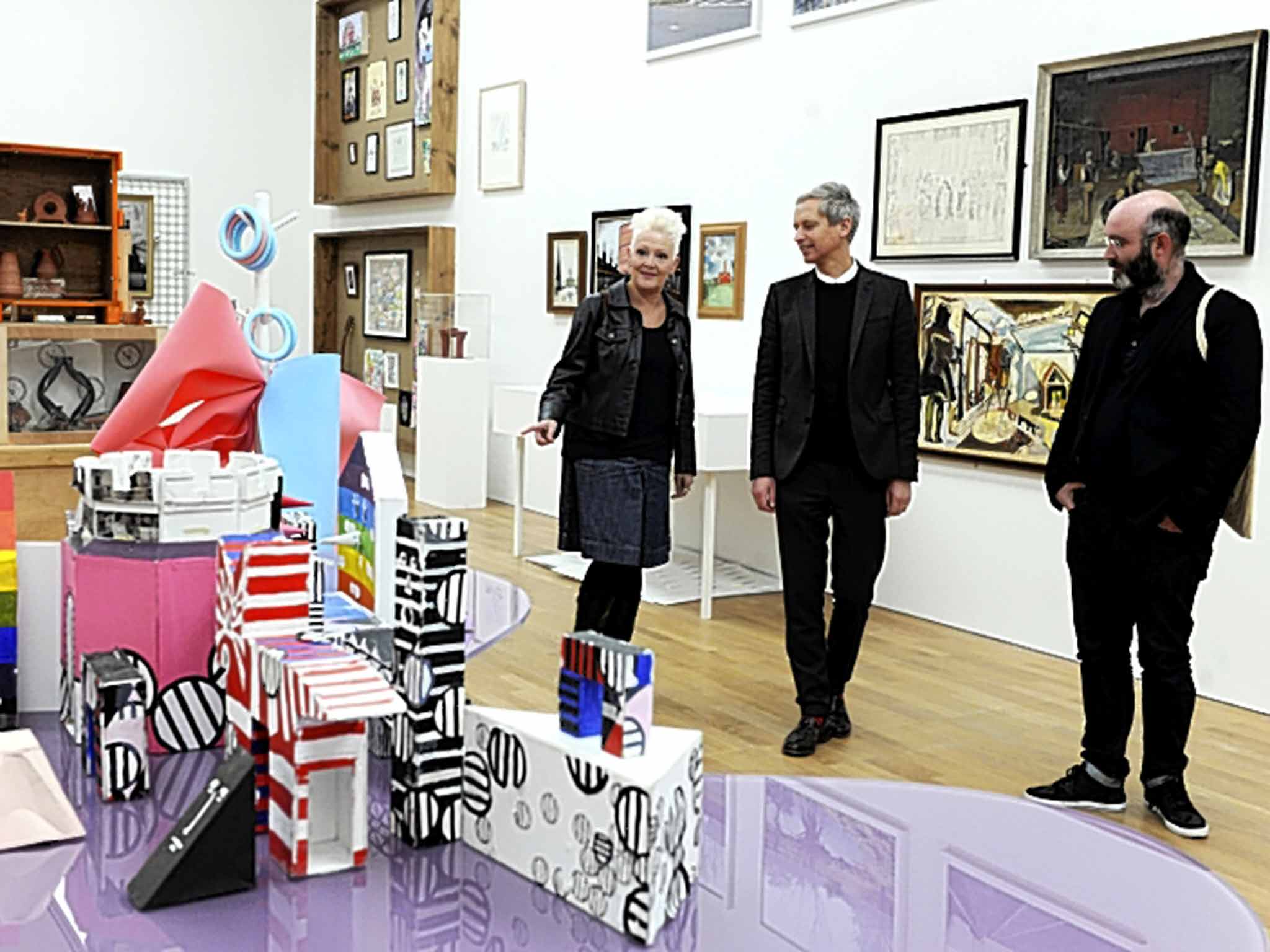Interactive art: The new breed of art gallery directors who want visitors to make things, not just gaze at pictures
A new breed of gallery directors want visitors to make things and not just gaze at pictures

“We're working on the front line here. Historically Middlesbrough is a frontier town, it's like being in the Wild West,” says Alistair Hudson, with mischief in his blue eyes. As the recently appointed director of the Middlesbrough Institute of Modern Art (Mima), there's a pioneer's bravado to his radical new programme.
He's in the process of transforming a £16m, stone and glass museum – the size of a shopping centre – into a new kind of gallery. Every pre-conceived idea of museums as cathedral-like spaces of art worship will be thrown out. Vegetables will grow on the museum terrace to be prepared in a cafe that believes in food as art. A long communal table in the spectacular glass atrium will host a daily four-course lunch where staff will eat with any members of the public who wish to join. A shop with an artist-run programme will teach local residents how to make and sell furniture. A gymnasium designed by New York artist Pablo Helguera and a workspace will both be open for the public to use. If plans turn out as Hudson envisions the museum will be a chaotic and noisy space filled with people making, doing, eating and talking.
“It will be an art slash health slash education centre,” says Hudson. “A contemporary community centre, or like an art school for everyone, where everyone has access to art in a very broad way.” His agenda for Mima is everything that the market driven art world is not. Hudson's ideas are rooted in art as a functional, living thing, more akin to the Bauhaus and Italian Futurism, rather than art for art's sake.
Community and socially engaged art practices have been around for some time but Hudson's ambition sets out a concise plan for making art that extends into every aspect of life: food, houses, gyms, hospitals and schools. It comes out of a history of art and social reform, influenced by the later ideas of John Ruskin who believed in social transformation through education. Hudson's version offers a twist of humour, a light touch to engage and amuse as well as change – because no one wants a Victorian moraliser on her back.
“Art has made itself so exclusive that it has cut out the really exciting bits of art getting involved in society,” he says. “Art that gets sold to rich people is useful to rich people. They're the people who know how to use art really well because it increases their power status, their financial status, their social status. It gives their friends something to talk about.” He drops into an impression of art collectors at a dinner party: “Oh you've got a Richter too.”
Hudson's a slight figure dressed in a grey jacket and jeans, energetic and enthusiastic, he comes across as open, funny and genuine about what he does. He began his career working for Anthony d'Offay gallery in London, where he stayed for seven years. “It was amazing. We did exhibitions with the who's who of the art world but it put in my head the idea that this is not what I believe art really is. Ultimately it was producing luxury goods for rich people. I studied art history and there was all this stuff about changing the world, but this [d'Offay's] wasn't changing the world. It was quite conservative,” he says.
He went on to work near Coniston village, Cumbria, as deputy director at Grizedale Arts. Far removed geographically from the London art world, he and director, Adam Sutherland, worked on a series of projects that questioned the role of art and the artist. Sutherland's still there, running a well-established artists residency now based in Lawson Park, a house once owned by Ruskin.
Young artists come up to be “re-orientated” into ideas of Useful Art. It sounds rather authoritarian but offers a unique programme in which there's no opportunity to sit around, smoke and discuss the finer points of esoteric art theory. Like a benevolent headmaster, Sutherland has everyone up and dressed in time for breakfast where daily standards are high – he chides anyone who doesn't use a butter dish, milk jug or makes their tea in a cup, and not a pot. After a morning meeting artists work through until six or seven at night, seven days a week.
There's reformers' zeal against art as a tourist attraction, commodity, or “stunt art” and there's no time for: “those large-scale inflatable sculptures in the landscape that will apparently attract tourists”, Sutherland says. “Our programmes are about ordinary and everyday and we don't follow the art world dictate of innovation, and spurious radicalism.”
Join our commenting forum
Join thought-provoking conversations, follow other Independent readers and see their replies
Comments